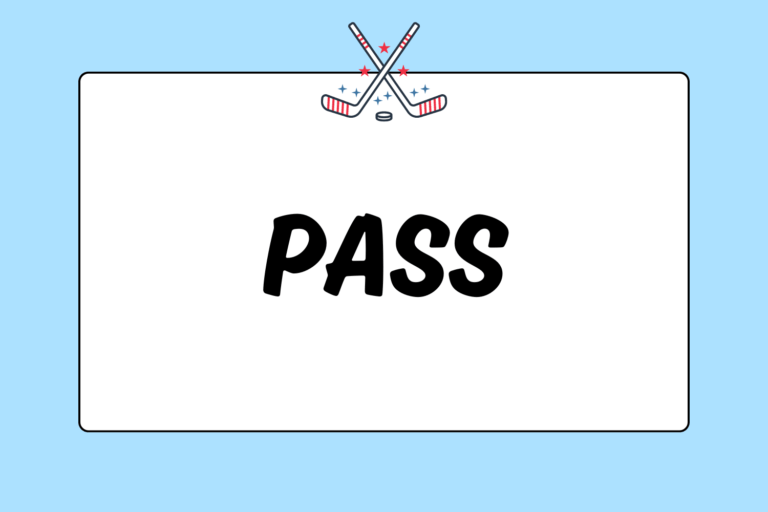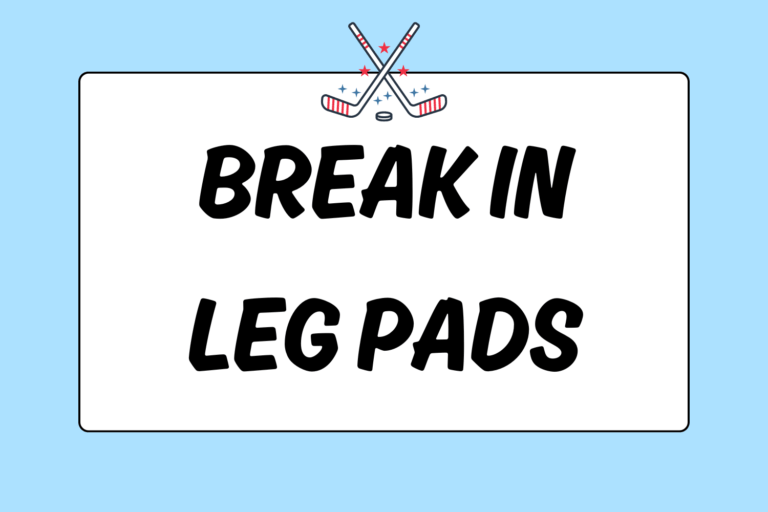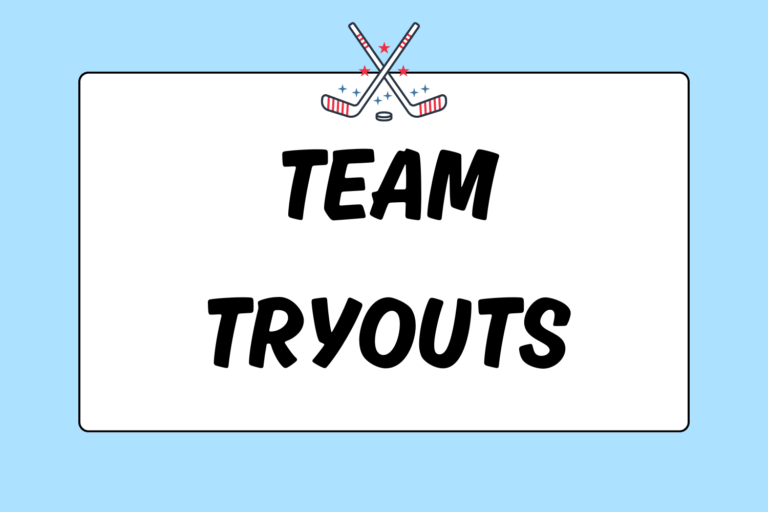According to the USA Hockey Rulebook, a team’s goalie may be removed at any time in the game and have another skater replace him. By yanking the goalie from the game, it’s possible to bring an “extra attacker” onto the ice and have six skaters on the offensive end. Pulling the goalie obviously leaves the team open for a goal-against, but there are times when the benefits of having an extra attacker outweigh the risks. This guide explains when to pull your goalie and how to do it effectively.
When to Pull the Goalie
There are two circumstances to pull your team’s goalie:
- When down by a small margin in the final minutes of a game.
- During a delayed penalty call before the whistle.
Delayed penalties are the more straightforward scenario. When the other team commits a penalty while your team possesses the puck, you may pull the goalie for an extra attacker. The moment the other team regains control of the puck, the ref will blow his whistle, stop play, and your team will be on the power play for the ensuing faceoff. Pulling the goalie on a delayed penalty allows you to take advantage of the extra time on the man advantage (though 6-on-5 opposed to 5-on-4), and is done so with almost no risk since there will be a whistle before your opponent can shoot at the open net.
However, desperation moves also come with huge risks. With the clock winding down and your team in dire need of an equalizing goal, pulling your goalie for an extra attacker leaves your opponent with an unprotected net. Because of this, there are some standards for when to pull the goalie:
- Down by one goal with 90 to 120 seconds remaining.
- Down by two goals with around 120 to 150 seconds remaining.
- Down by two goals with over 150 seconds when your team has a power play.
These are merely guidelines. Some coaches have been known to start pulling their goalie with three or more minutes remaining, but this isn’t advised. The coach can sacrifice any possible advantage if he pulls the goalie for an extra attacker too early. The opposing team’s chance of scoring goes up drastically the longer they can rifle pucks at an unguarded net.
Puck Location
The location of the puck is crucial in deciding when to pull the goalie off the ice. If play is in your defensive zone and the other team has possession, the goalie should obviously stay in the net. Further, if there is a stoppage in play and the faceoff will be in your defensive zone, the goalie should likely re-enter the crease until your team can clear the zone.
Amazingly True Story
Roger Neilson coached in the National Hockey League (NHL) for over two decades. While he never won a Stanley Cup, he did leave an enduring mark on the game… sometimes by thinking so outside the box that the NHL had to update the rulebook. Neilson once pulled his goalie and instructed him to leave his stick on the goal line before skating to the bench so it would prevent any dump in goals. The refs were perplexed with the move, but couldn’t find a rule that prevented it. Thanks to Neilson, this tactic now results in a two-minute penalty.
Goal Differential
In certain leagues, goal differential affects standings and determines tie-breakers. Goal differential is the team’s goals scored minus the goals allowed (throughout the season). If your league uses goal differential as a tie-breaker, pulling the goalie — especially when down by two — isn’t a wise decision. Sure, you may have a chance to tie the game, but more than likely you’ll lose just the same, but with an extra goal against.
Tips for the Bench
There are three ways the players on the bench can help their team transition to the extra attacker:
- Be prepared: Know who the extra attacker is so your team can transition quickly to a 6-on-5 when the goalie gets to the bench.
- Signal the goalie: Once the coach is ready to pull the goalie and send the extra attacker, the bench should help get the goalie’s attention and let him know to skate to the bench. A little yelling and a lot of arm waving go a long way.
- Know who the extra attacker is: It may seem obvious, but teams need to know who their extra attacker is before the goalie gets pulled. Screwing up the substitution can result in a bench minor for too many men.
Tips for the Goalie
Even though he’s essentially leaving the game, the goalie’s job isn’t over. Goalkeepers leaving the ice for the extra attacker can help their team in three ways:
- Be aware: Goalies who are aware of the game situation will be best prepared to leave the ice for an extra attacker. If the goalie knows when he might get pulled, he can glance to the bench for the coach’s signal.
- Sprint speed: Full-speed, forward skating is rarely needed as a goalie. However, it can be the difference in making it to the bench in a timely manner. Goalies who take warm-up/cool-down laps and skate lines with their teams will be more prepared to get to the bench in a hurry.
- Cheat towards the bench: A smart goalie cheats a few feet out of the net and towards the bench when there’s a faceoff. He has to stay in the net until possession is gained, but he can still get a head start by moving towards the bench. If his team wins the faceoff, he’ll be ready to get off the ice as soon as possible. If his team loses the faceoff, he should quickly get back to the crease.
Extra Man Strategy
You should change the way you attack the net and hold the offensive zone if you have an extra attacker. Here are a few things to consider:
Extra Attacker on Offense
When your team is set up in the offensive zone, the sixth skater should park himself near the net. This will affect the play in one of two ways: Either your team will outnumber the opposition near the crease, or you’ll draw an extra defender down low and create more passing space for your team.
Backdoors & Screens
Because of the outnumbered situation and the defense’s responsibility to guard the extra player down low, your team will have extra passing space to work with. A good scoring strategy is to work the puck around the exterior until a cross-ice lane opens for a backdoor chance. If no lane opens, hard shots from the point into the traffic down low isn’t a bad second option. All of the bodies near the crease will help with screens, deflections, and rebound opportunities.
Guard the Blue Line
When you’ve got an extra attacker on the ice, you should still keep two men at the point. However, their role in holding the zone will change. Point men normally focus on stopping pucks along the boards, but when your net is empty, they should guard more towards the middle. Remember: A clear by the opposing team down the middle of the ice will likely result in an empty-net goal.
While the D protects the middle, the forwards who aren’t camping near the net are responsible for guarding clearing attempts around the boards (near the faceoff circles). The defensemen will hold the zone against clearing attempts down the middle of the ice.
Mental Edge
Pulling the goalie for an extra attacker while on the power play can be a huge boost to your team’s offensive potential, but it does come with a downside. If the opposing team is on the penalty kill, they will be able to ice the puck without consequence. This means that every time they get possession, they will be launching the puck towards your unguarded net, with no fear of earning an icing call. While this likely won’t change whether or not you pull your goalie, it’s definitely worth taking into account.
Risk versus Reward
While it’s easy to look at pulling the goalie as a high-risk, high-reward endeavor, this isn’t entirely true. Sure, both teams have a chance to score when a goalie’s pulled, but another goal-against hardly matters if you’re about to lose. Instead — if done correctly — pulling the goalie should be thought of as low-risk decision. Learn to pull the goalie effectively, and your team might have some late-game heroics to show for it.





